“I YELPED.”
That is what Caitlin said when I showed her this week’s Bird of the Week. And, as ever, Caitlin’s reaction was correct. Because this bird…when I tell you that this bird is out of this world…when I tell you that this bird will make you gasp and shout and leap out of your seat…trust me.
Let’s meet…the hornbill.
YELP. (Loses power of speech) look…look at bird!!!!!!!!! With the feathers and the eyes and the beak and the HEAD THING??? HORNBILL!
Whew, OK, I’ve regained composure. There are roughly 60 kinds of hornbills—in fact, a wise reader once wrote us about one, but I was too “not good at my bird-related tasks” to grasp the miracle in front of me—and what we are looking at here is a great hornbill, which makes its home in the tropical forests of Southeast Asia. It is aptly named, because it is off-the-charts great. I mean….have you seen it???!! Whew, calming down again. BUT LOOK AT THIS VIDEO. It’s got great hornbills flying around and eating figs and fighting each other and David Attenborough, and you must watch.
OK, OK, I am now fully calmed. Let’s get into some hornbill facts.
First, the amazing helmet-y thing on the hornbill’s head is called a “casque.” (We have discussed casques before in Katherine’s cassowary entry. Katherine’s cassowary casque—say that one three times fast!) Some hornbills have very prominent casques, and some don’t. (From the San Diego Zoo: “In most hornbills, the casque is a hollow or spongy structure made out of keratin. It is believed that this structure acts as a vibrating chamber to make the hornbill's voice louder.” There you have it, humanity’s quieter folks—get a casque on your head and your voice will boom out across the land.)
You can find a hornbill in many different parts of the world, from Africa to Asia to the Middle East and even down by New Guinea and Australia. And they often look very different from each other. For instance, here is the black-casqued hornbill, which lives in rainforests across West Africa.
And here’s the luzon hornbill, which hangs around in the northern Philippines.
Different coloring, different casque action, kinda different everything! Nature rules.
But though the appearances vary widely, there are some commonalities that you can find across the Hornbill Cinematic Universe (HCU). Most of them are monogamous and mate for life with the same other hornbill. In many cases, the female hornbill actually makes a nest for herself in the hollow of a tree while she’s breeding, and then—well, lemme turn it over to the Nature Conservation Foundation in India:
The female then seals herself inside this cavity with droppings and mud and lays eggs, leaving only a slit for the male to bring back food for the family.
It’s true! Here’s a video of a hornbill feeding his mate.
And here’s a cool video of a female hornbill breaking down her hidey-hole when she’s done breeding.
Hornbills are omnivorous birds, and eat everything from insects to other small birds, but what a lot of them love the most is fruit—and that fact actually makes them a vital part of their overall ecosystem. They’re often called “gardeners of the forest,” because they spread tens of thousands of fruit seeds around while they feast—and since they are very good at flying for long distances, that spreading happens over a large patch of land, and presto! You’ve got more plant life! Isn’t that so cool?
OK, Substack is telling me that this post is dangerously close to being too long to fit into an email, so I’m going to cut things off here, except to say that several kinds of hornbills are critically endangered due to humans being THE ABSOLUTE WORST. So before I turn this thing over to fun pictures and videos, can I just ask humans to stop being THE ABSOLUTE WORST so that we can have hornbills around for longer? Thank you!
OK, now for some amazing pictures of amazing hornbills, and a couple very entertaining videos. Brace yourselves, you will plotz!!!
Knobbed hornbill
Wrinkled hornbill
Oriental pied hornbill
Tickell's brown hornbill
Northern red-billed hornbill
White-crowned hornbill
A reminder: you can check out our complete Bird of the Week list here, and get in touch with your bird suggestions at hello@discourseblog.com.


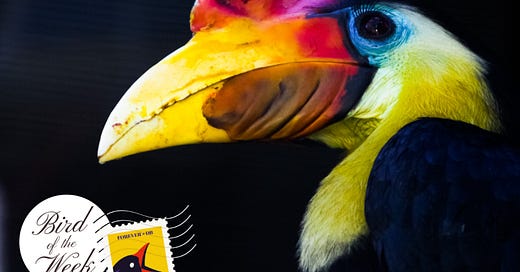



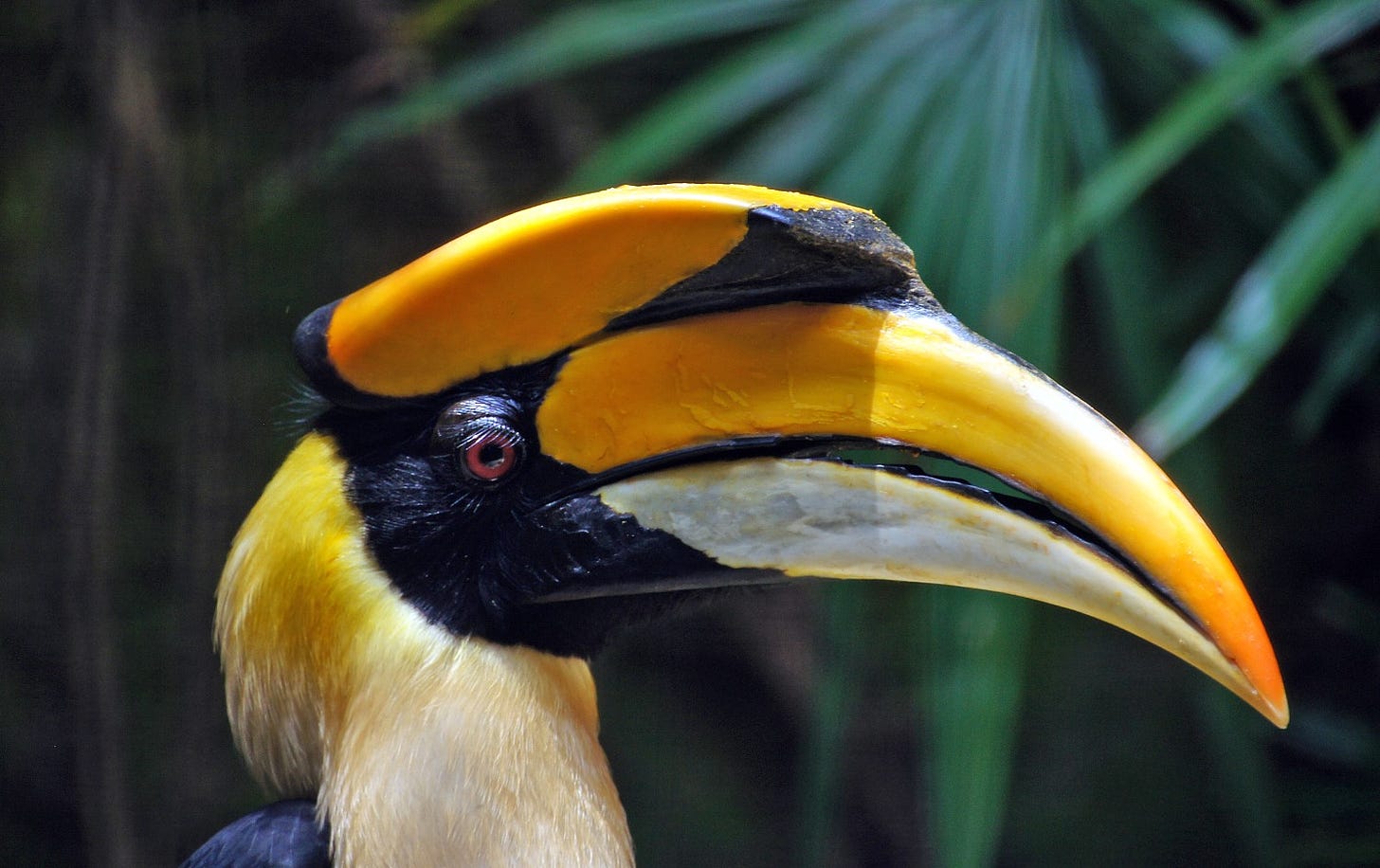
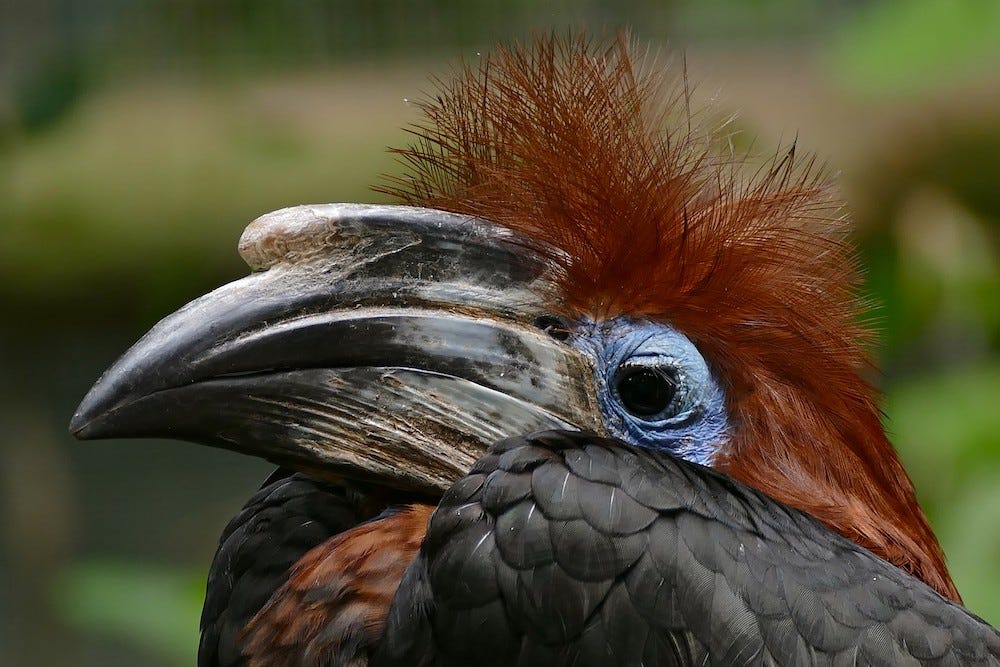
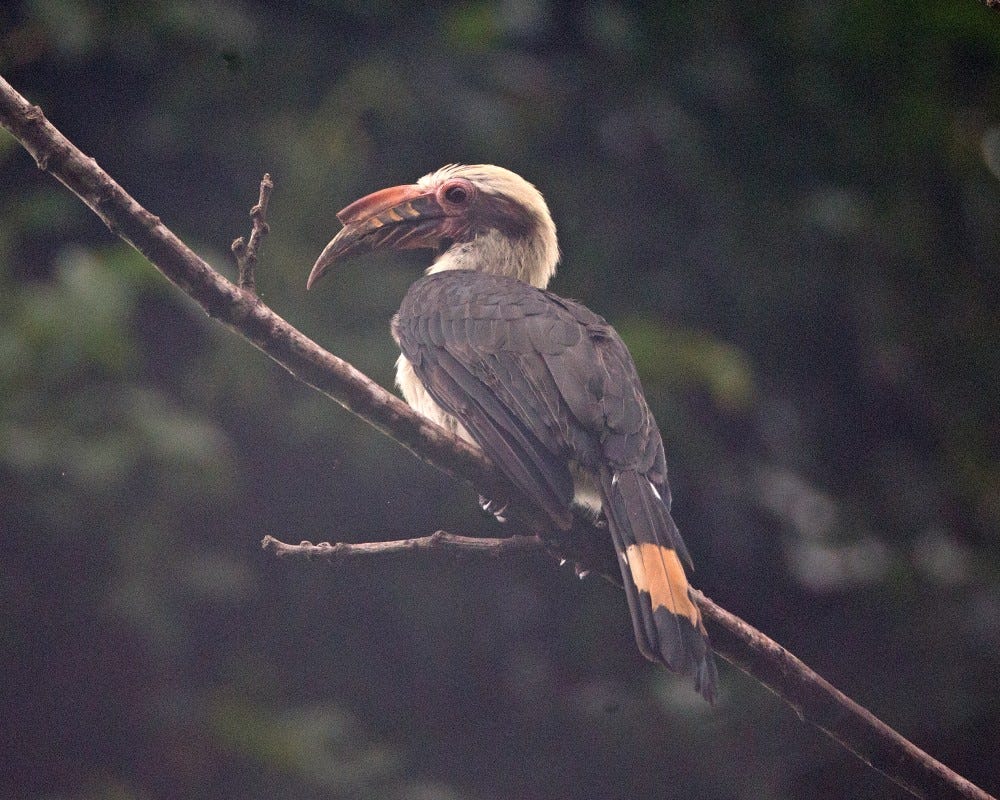
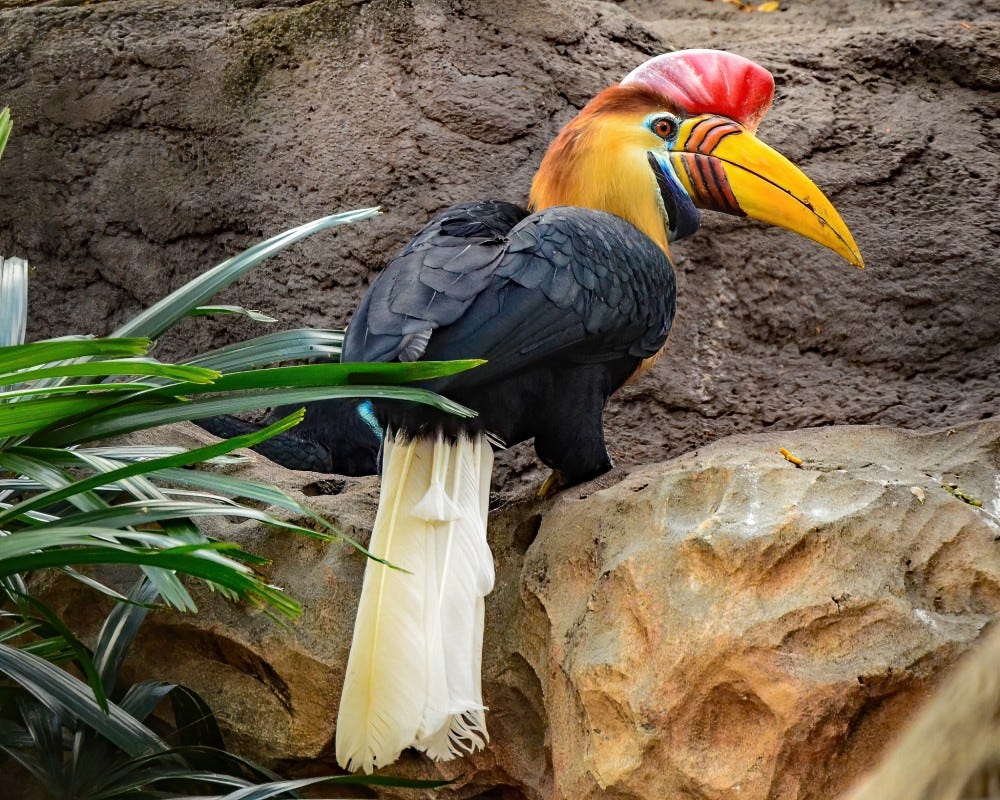
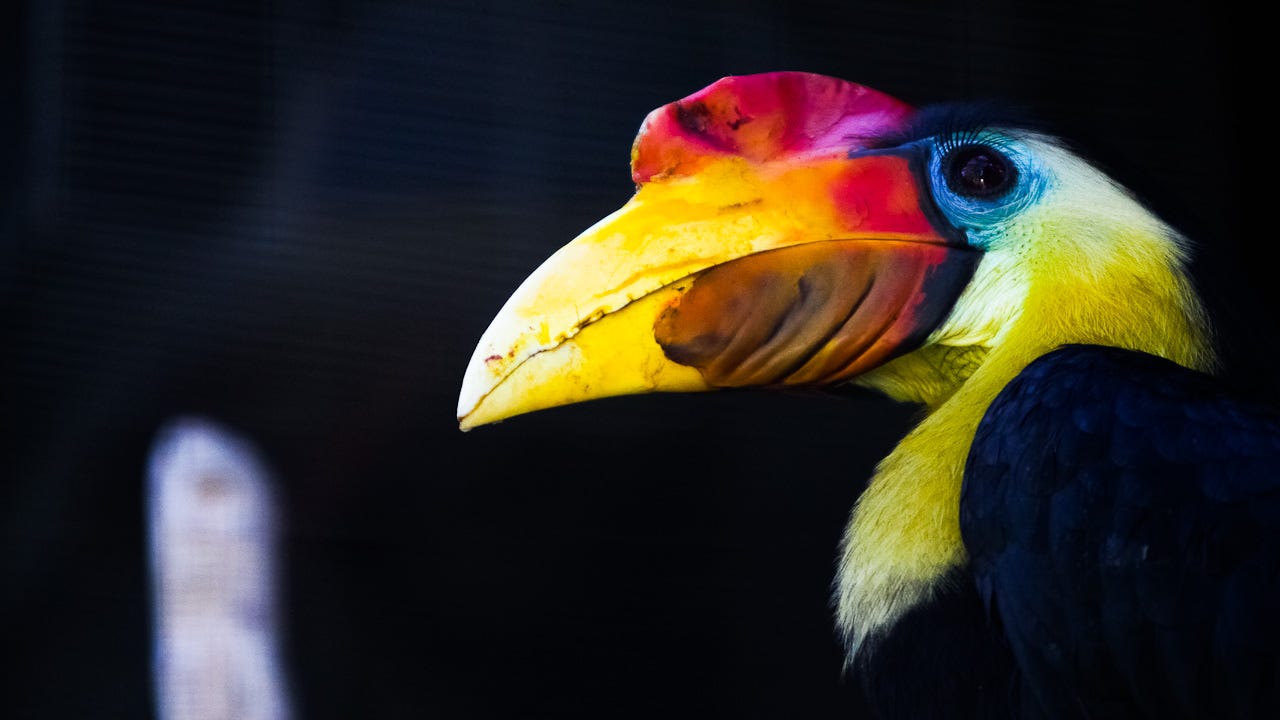
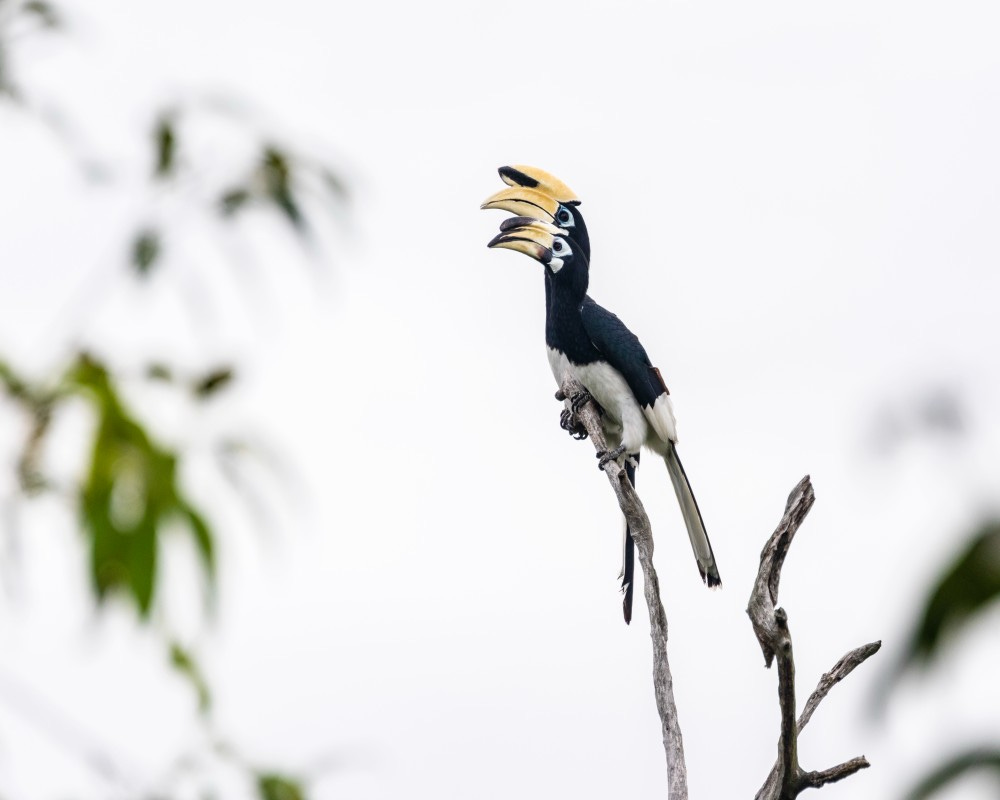
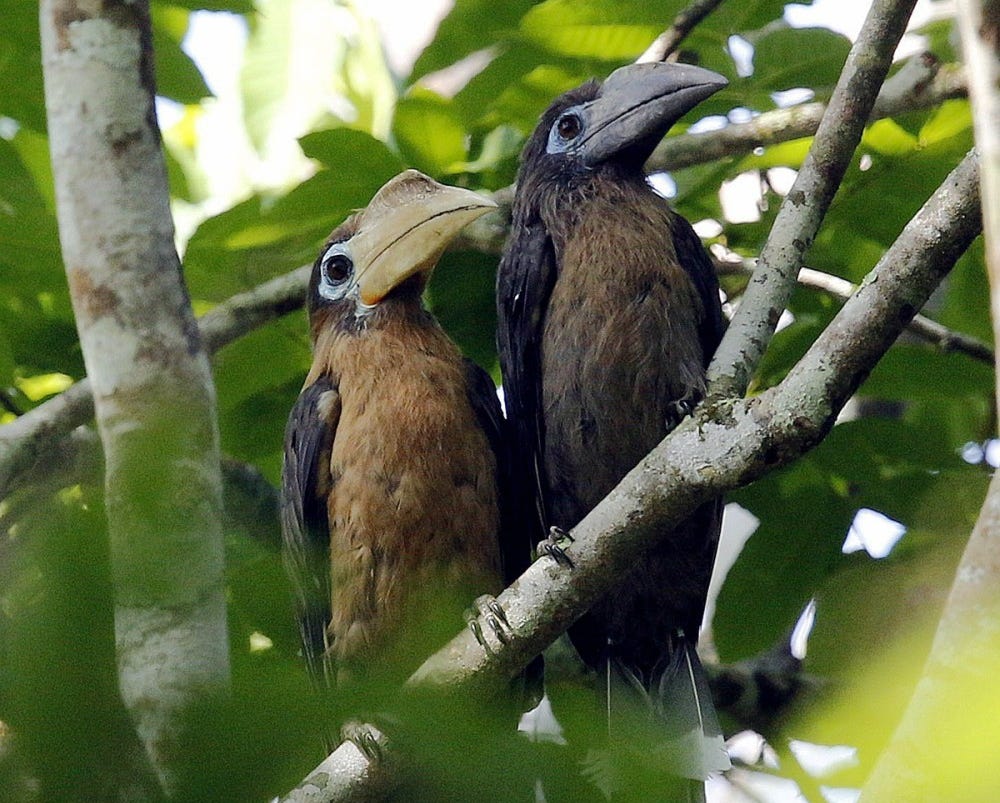
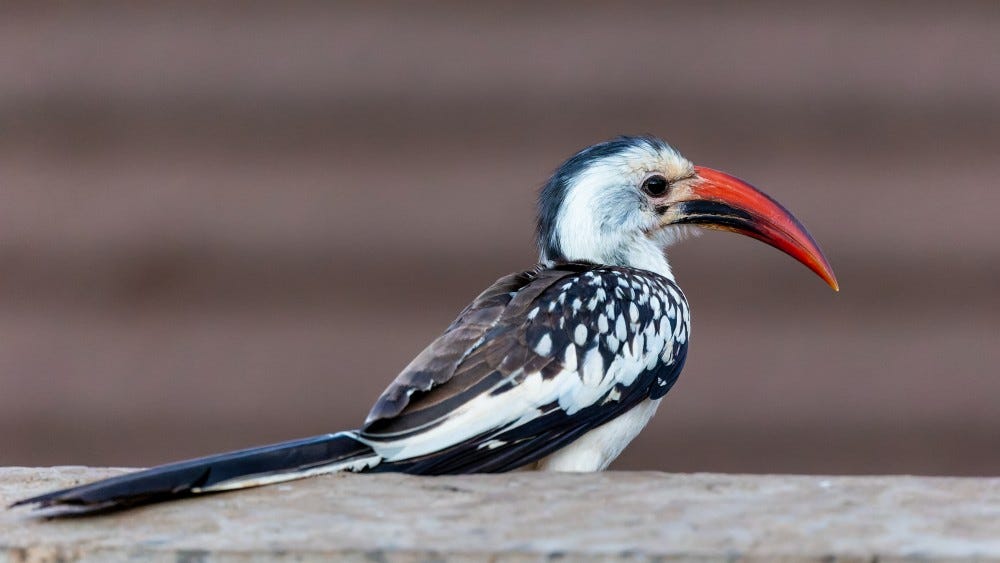

Hornbill Casquematic Universe